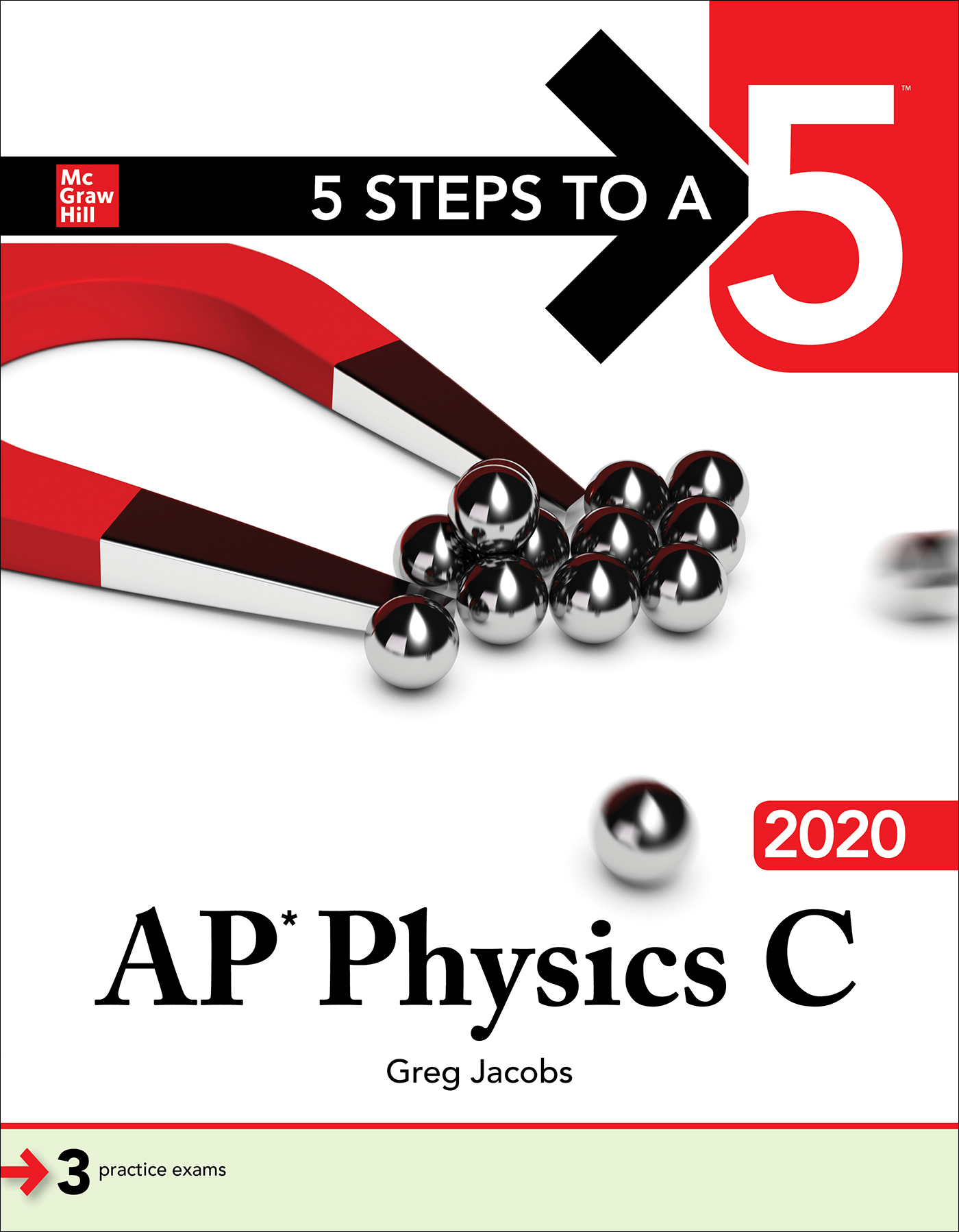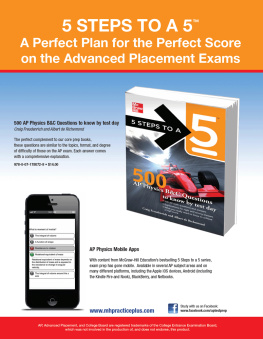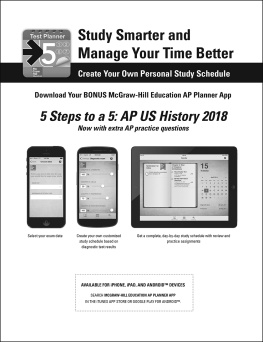Contents
Guide
Page List


Copyright 2019 by McGraw-Hill Education. All rights reserved. Except as permitted under the United States Copyright Act of 1976, no part of this publication may be reproduced or distributed in any form or by any means, or stored in a database or retrieval system, without the prior written permission of the publisher.
ISBN: 978-1-26-045476-5
MHID: 1-26-045476-2
The material in this eBook also appears in the print version of this title: ISBN: 978-1-26-045475-8, MHID: 1-26-045475-4.
eBook conversion by codeMantra
Version 1.0
All trademarks are trademarks of their respective owners. Rather than put a trademark symbol after every occurrence of a trademarked name, we use names in an editorial fashion only, and to the benefit of the trademark owner, with no intention of infringement of the trademark. Where such designations appear in this book, they have been printed with initial caps.
McGraw-Hill Education eBooks are available at special quantity discounts to use as premiums and sales promotions or for use in corporate training programs. To contact a representative, please visit the Contact Us page at www.mhprofessional.com.
McGraw-Hill Education, the McGraw-Hill Education logo, 5 Steps to a 5, and related trade dress are trademarks or registered trademarks of McGraw-Hill Education and/or its affiliates in the United States and other countries and may not be used without written permission. All other trademarks are the property of their respective owners. McGraw-Hill Education is not associated with any product or vendor mentioned in this book.
AP, Advanced Placement Program, and College Board are registered trademarks of the College Board, which was not involved in the production of, and does not endorse, this product.
TERMS OF USE
This is a copyrighted work and McGraw-Hill Education and its licensors reserve all rights in and to the work. Use of this work is subject to these terms. Except as permitted under the Copyright Act of 1976 and the right to store and retrieve one copy of the work, you may not decompile, disassemble, reverse engineer, reproduce, modify, create derivative works based upon, transmit, distribute, disseminate, sell, publish or sublicense the work or any part of it without McGraw-Hill Educations prior consent. You may use the work for your own noncommercial and personal use; any other use of the work is strictly prohibited. Your right to use the work may be terminated if you fail to comply with these terms.
THE WORK IS PROVIDED AS IS. McGRAW-HILL EDUCATION AND ITS LICENSORS MAKE NO GUARANTEES OR WARRANTIES AS TO THE ACCURACY, ADEQUACY OR COMPLETENESS OF OR RESULTS TO BE OBTAINED FROM USING THE WORK, INCLUDING ANY INFORMATION THAT CAN BE ACCESSED THROUGH THE WORK VIA HYPERLINK OR OTHERWISE, AND EXPRESSLY DISCLAIM ANY WARRANTY, EXPRESS OR IMPLIED, INCLUDING BUT NOT LIMITED TO IMPLIED WARRANTIES OF MERCHANTABILITY OR FITNESS FOR A PARTICULAR PURPOSE. McGraw-Hill Education and its licensors do not warrant or guarantee that the functions contained in the work will meet your requirements or that its operation will be uninterrupted or error free. Neither McGraw-Hill Education nor its licensors shall be liable to you or anyone else for any inaccuracy, error or omission, regardless of cause, in the work or for any damages resulting therefrom. McGraw-Hill Education has no responsibility for the content of any information accessed through the work. Under no circumstances shall McGraw-Hill Education and/or its licensors be liable for any indirect, incidental, special, punitive, consequential or similar damages that result from the use of or inability to use the work, even if any of them has been advised of the possibility of such damages. This limitation of liability shall apply to any claim or cause whatsoever whether such claim or cause arises in contract, tort or otherwise.
CONTENTS
ACKNOWLEDGMENTS
I extend my thanks to Grace Freedson, who was the driving force behind this books publication, and especially to Don Reis, who was not only a superb editor but also an unwavering source of support. I also appreciate Ruth Millss awesome work on the second edition and Bev Weiler and Clara Wentes careful and thorough editing of the questions and example problems for the 20102011 edition.
Thank you to Chat Hull and Jessica Broaddus, veterans of my 2002 Physics B class, who provided the idea for two free-response questions.
My 2004 students at Woodberry Forest School were extremely helpful in the development of this book. It was they who served as guinea pigs, reading chapters for clarity and correctness, making suggestions, and finding mistakes. They are Andrew Burns, Jordan Crittenden, David Fulton, Henry Holderness, Michael Ledwith, Johnny Phillips, Rob Sellers, and Chris Straka from Physics C; Wes Abcouwer, Wyatt Bone, Matt Brown, David Goodson, Bret Holbrook, Mike Johnson, Rich Lane, Jake Miller, Jake Reeder, Charles Shackelford, Beau Thomas, David Badham, Marks Brewbaker, Charlton deSaussure, Palmer Heenan, Wilson Kieffer, Brian McCormick, Eli Montague, Christian Rizzuti, Pierre Rodriguez, and Frazier Stowers from Physics B; and Andy Juc, Jamie Taliaferro, Nathan Toms, Matt Laughridge, Jamie Gardiner, Graham Gardiner, Robbie Battle, William Crosscup, Jonas Park, Billy Butler, Bryan May, Fletcher Fortune, and Stuart Coleman from the general physics class. Although Josh and I bear responsibility for all errors in the text, the folks mentioned above deserve credit for minimizing our mistakes.
The idea for the Four-Minute Drill came originally from Keen Johnson Babbage, my seventh-grade social studies teacher. Ive borrowed the idea from him for over two decades of teaching AP. Thank you!
The faculty and administration at Woodberry, in particular Jim Reid, the science department chairman, deserve mention. They have been so supportive of me professionally.
Additional thanks go to members of my 2009 AP physics classes who helped edit the practice tests: Min SuKim, Cannon Allen, Collins MacDonald, Luke Garrison, Chris Cirenza, and Landon Biggs. And to later students: Michael Bauer, Vinh Hoang, and Evan Sun.
Most important, Id like to thank Shari and Milo Cebu for putting up with me during all of my writing projects.
ABOUT THE AUTHOR
GREG JACOBS teaches AP Physics C, AP Physics 1, and conceptual physics at Woodberry Forest School, the nations premier boarding school for boys. He is a reader and consultant for the College Boardthis means he grades the AP Physics exams, and he runs professional development seminars for other AP teachers. Greg is president of the USAYPT, a nonprofit organization promoting physics research at the high school level. Greg was recently honored as an AP Teacher of the Year by the Siemens Foundation. Outside the classroom, Greg has coached baseball, football, and debate. He umpires high school baseball. He is the lead broadcaster for Woodberry football, baseball, soccer, and basketball. Greg writes a physics teaching blog available at www.jacobsphysics.blogspot.com.
INTRODUCTION:
THE FIVE-STEP PROGRAM
Welcome!
I know that preparing for the Advanced Placement (AP) Physics exam can seem like a daunting task. Theres a lot of material to learn, and some of it can be rather challenging. But I also know that preparing for the AP exam is much easierand much more enjoyableif you do it with a friendly guide. So let me introduce myself; my name is Greg, and Ill be your friendly guide for this journey.





